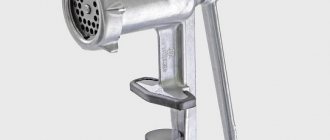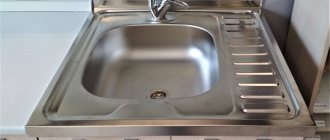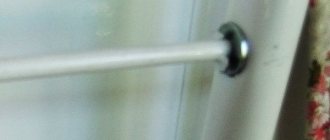DIY development stages
A do-it-yourself corner cabinet is made following the following steps:
- Designing elements on drawings according to the designed sizes and shapes.
- Preparation of materials.
- Cutting parts.
- Product assembly.
- Checking the symmetry of finished furniture.
The work will require the following tools:
- screwdriver;
- electric drill;
- hammer;
- square;
- building level;
- pencil or chalk for marking.
How to make a drawing?
Corner cabinet drawings are made taking into account:
- heights, widths of doors, covers, bases, bottoms;
- thickness of parts;
- the intended shape of the furniture, indicating the internal contents (shelves, ledges, drawers).
How not to make a mistake with sizes?
The drawings of corner cabinets specify the exact dimensions of the furniture, the thickness of the elements, and the dimensions of the gaps. Product diagrams can be made according to a standard or original design.
When choosing a non-standard product in the scheme, it is important to consider the following nuances:
- the minimum depth of furniture according to standards is no less than 35 cm;
- the permitted depth of shelves and drawers should not exceed 0.9 m;
- the minimum width is not less than 0.1 m;
- Non-standard furniture is not limited in height, so you can design a cabinet that reaches the ceiling; the optimal height for comfortable use is 2.1-2.4 m.
Selection of materials
The following materials are used to make furniture:
- natural wood;
- MDF;
- laminated chipboard;
- chipboard;
- drywall;
- plastic and tempered glass (for doors and shelves).
Wood is environmentally friendly, easy to process and install, durable, aesthetically pleasing, and has an impressive texture and texture. It is necessary to take into account the high cost of building materials and the need for additional surface treatment with varnishes, paints, and waterproof impregnations. Wood can be complemented by methods of engraving, patination, staining, and gilding. The room in which the wood cabinet is installed must be insulated, without high humidity and temperature changes.
You can assemble a cabinet with your own hands from MDF boards, which are made from crushed sawdust using the dry pressing technique; they are durable, environmentally friendly, have high performance parameters, and an affordable price. The material is easy to process, safe to use, non-toxic, and has decorative characteristics.
Chipboards are made from wood chips using the hot pressing method. The materials differ in decoration options, thickness, number of layers and formaldehyde concentration. The standard thickness of the slabs is 16-25 mm. Some sheets are lined with decorative film that imitates wood or plastic. The material is inexpensive and easy to install.
Drywall can be used as a frame or ceiling for a closet in a bedroom, kitchen, etc. The advantage of the material is its affordable price, easy installation, and the ability to adjust during operation. The composition is environmentally friendly and does not contain toxic impurities; The main components are cardboard, paper, gypsum, etc.
The material is distinguished by a high level of thermal insulation and wide possibilities for creating custom designs (applying plaster, wallpaper, film, tinting). Spot lighting can be built into drywall. It is necessary to take into account instability to mechanical damage and instability to humidity.
Additional materials for construction work are:
- furniture board;
- roller guides;
- accessories (handles, locks);
- shelves, drawers;
- hangers;
- screws, self-tapping screws, dowels;
- upper and lower false panels.
What should the facade be like?
When developing the assembly diagram for a corner cabinet, the features of the facade are taken into account. The design can be open or closed with compartment-type doors. Doors can be decorated with mirror inserts, painting, engraving, carvings, and decorative mosaics. Facades can be covered with decorative tint film, damper tape, and metal inserts.
Facade sashes can be of the following types:
- swing;
- roller shutters;
- sliding (similar to a compartment-type wardrobe).
Accessories
After completing the preparation and installation of the main elements of the cabinet, you need to select furniture fittings. The design and technical features of the products are determined depending on the type and material of the cabinet.
The assembly instructions for the corner structural solution require the use of:
- shelf holders;
- self-tapping screws for fixing supports;
- adjustable support;
- cabinet legs;
- hinges for sashes;
- crossbars;
- handles, washers and screws;
- nails
Material selection
Table No. 3. The most common materials for making cabinets.
| View | Description |
| Natural wood | This is the most environmentally friendly and expensive option for making furniture. Cabinets of this type are distinguished by their strength, durability, and at the same time they have an impressive weight. In addition, wood products have an unusual decorative appearance, they have a unique texture. It is recommended to choose the most durable wood options - oak, pine. It should be taken into account that such material is deformed when exposed to high temperatures and humidity. In addition, it is exposed to pests. |
| MDF | This material is a mixture of wood chips, various fibers and resin. The main advantage of the material is its affordable cost. Thanks to proper processing, MDF boards are durable and quite easy to process. In addition, they do not deform over time and have a very fine texture that does not stand out. Another obvious advantage is the large size of the slabs. |
| Plywood | This is a fairly strong material that is suitable for creating a cabinet frame. It is recommended to use only multi-layer plywood for such purposes. Like natural wood, this material can become deformed as a result of exposure to moisture. |
| Drywall | This material is often used to cover the frame of corner cabinets. It is lightweight, so installation will not seem difficult even for a beginner. In addition, some types of drywall have good resistance to humidity and temperature changes. |
Prices for sheet plywood
Plywood sheets
What materials are used to make the cabinet?
When purchasing a corner cabinet, the material it is made of is of no small importance. Unsuitable material may cause damage to the cabinet during assembly.
Table 3. Popular material options for cabinets.
| Material | Description |
| Solid (wood) | Wood is considered the most durable, but at the same time expensive material. It is used mainly for the manufacture of luxury products. The finished structure will be quite heavy, so one person may need assistance during assembly of the cabinet. One of the disadvantages is the poor resistance of natural wood to sudden changes in temperature and humidity in the room. |
| MDF | The material is wood chips pressed under high temperature. It is not very durable, so manufacturers use a special polymer film as cladding. At the same time, the material is budget-friendly and environmentally friendly, which is why it has gained enormous popularity. In addition, it does not deform at high temperatures and humidity. |
| Chipboard | The material is obtained by gluing sawdust with resin, and compared to other varieties it is not environmentally friendly. Such cabinets are not recommended for installation in children's rooms and bedrooms of allergy sufferers. The only argument in favor of choosing chipboard will be the favorable price. |
An MDF cabinet looks aesthetically pleasing and can be available in a variety of colors
Step-by-step instruction
Once the cabinet diagrams and sketches have been created and approved by your household, you can begin making the cabinet. You will need the following materials and tools (sample list):
- furniture board;
- metal profile and roller mechanism for doors;
- fiberboard sheets for the back wall (if it is intended);
- drawers, doors, rods, hooks;
- accessories;
- false panels (if necessary);
- perforator;
- screwdriver;
- "hexagon";
- “level” (to assess the evenness of the shelves);
- glue, ruler, tape measure, pencil;
- triangle;
- screwdrivers, hammer;
- fasteners (bolts, confirmations, supports for shelves, etc.)
According to the experience of many men who have already created cabinets with their own hands, cutting the boards and their external edging is best left to professionals: take the material to a workshop where there is a special tool for precise cutting. They can also do original milling on the facades. You can “cut” shelves and parts for drawers yourself – i.e. interior filling of the cabinet.
If your closet is built-in, first of all you need to mark the boundaries on the floor where the doors will be. The same lines need to be applied to the ceiling. Then shelves and rods are screwed to the walls using a hammer drill and other tools. The final touch is to install the door guides and the doors themselves.
For a cabinet with back walls and a bottom, the cabinet base or podium is first assembled and installed. Then the long and important process of drilling holes begins. You must first carefully mark all attachment points. Then you can drill. If the hole is made on a plane, an 8mm drill will be required. For end holes - 5 mm, and its depth should not exceed 60 mm.
First, the frame of the cabinet is assembled - that is, its vertical walls and partitions, which are fastened together by horizontals - the base, the top cover, etc. Then shelves and rods are screwed to the side walls. Carriages for drawers are attached. A metal sliding door mechanism is attached to the top and bottom. After this, the back wall is attached (usually it consists of several sheets of fiberboard, cut to fit the sections of the cabinet). Then the drawers and doors are installed.
Ideally, the cabinet should be assembled “lying down” - i.e. laying out the parts on the floor. This gives you a better chance of completing the assembly accurately. But this is not always possible due to limited space. Additionally, a tall cabinet that almost reaches the ceiling can be very difficult to lift. The main rule of “standing” assembly is to assemble all the parts from the bottom up - the base, side walls and partitions, then the shelves, etc.
A carefully thought out sketch, a good diagram, a little patience and precision - and your own corner wardrobe will delight you for many years!
Assembling corner cabinets in the kitchen
If there is a free corner in the kitchen, then you can install a corner cabinet there. This will save a lot of space for storing small household appliances or kitchen utensils. Supplied as standard:
- on the left and right side;
- Organ table and back panel;
- upstairs;
- at the bottom.
A set of internal elements - shelves, rods, built-in baskets. From these parts it will be easy to assemble a corner kitchen cabinet according to the instructions:
- Familiarize yourself with the furniture design, place all furniture components on the floor.
- Assemble the large parts - the base and the bottom.
- Install the side panels, then the top panel.
- Start attaching the interior shelves, which will also hold the frame in place.
- The finished body is upholstered on the reverse side.
- Install the doors. There are 2 options here. If the design is a coupe, then the rails are attached to the roof and bottom. If the model is wall-mounted, then the hinges must be attached to the walls, and the doors must be suspended on hinges.
- Place accessories inside: racks, pull-out baskets, shelves, etc.
- Finally, all visible self-tapping screws should be covered with colored caps.
Tip: Pass-through drawers, pull-out baskets and rails should be installed using a spirit level.
How to disassemble an old Soviet cabinet?
Wardrobes of the 70s and later periods of the last century were assembled mainly on eccentric ties, wooden dowels and screws. If you need disassembly and subsequent reassembly for moving, follow the instructions:
Stage No. 1: Shelves, drawers, handles
- Prepare the tools: rubber hammer, set of screwdrivers, screwdriver, chisel.
- Clear the floor near the cabinet so that it can be placed.
- Remove the shelves that rest loosely on the shelf supports.
Stage No. 2: Fasteners and mezzanine
Depending on the type of fasteners, remove them with the appropriate tool:
- The connection on the eccentric coupler is dismantled by turning a screwdriver inserted into the cross slot of the eccentric counterclockwise. The cylinder is removed by prying it off with a flat screwdriver. You can then quickly separate adjacent panels of the cabinet body.
Stage No. 3: Back wall, hinges, frame
Use a chisel to pry up the plywood back wall and lift up the nails. Press the wall back down and remove the nails with pliers. Remove the plywood and the connecting strip, if any. Remove the fasteners in three corners of the box. Remove the released panels. Now disassemble the remaining fastening. Place the bottom with the support frame facing up
Remove the frame by unscrewing the screws. Also disassemble the mezzanine. In the Soviet wall, carefully remove the glass doors, freeing them from the hinge clamps. Then remove the loops from their sockets. All of the above also applies to Estonian-assembled furniture.
Disassemble the corner cabinet without changing the position of the cabinet. Due to geometric features, such furniture is stable and does not need to be tipped over to the floor.
Features of door fastenings
Before assembly, you need to understand which mechanism will be used.
- Sliding doors are the simplest option and the most common in most cases. This mechanism is durable, fastened with hinges and does not require a large amount of free space in front of the cabinet walls. The most popular are horizontal doors - folding and lifting doors.
- Folding doors are more convenient in comparison with the first group. They resemble an accordion.
- The third option is a mechanism that is installed in corner wardrobes. With this use of space, the doors move relative to each other on rails and take up minimal space. At the same time, you need to take care in advance about the proper quality of the mechanism. Otherwise, the doors may get stuck and lose their desired position.
Unusual combinations and shapes can be combined in one model
Assembly
Assembly is generally the same regardless of cabinet type. The sequence is as follows:
- first, steel corners are mounted where later it will be necessary to attach the side walls to the floor and ceiling;
- assemble a frame from ready-made parts;
- attach rollers to the door;
- install guides;
- install doors.
When the main work is done, you need to assemble the cabinet inside. Install the brackets and arrange all the shelves in their places. After this, all that remains is to install the fittings.
The work is carried out in the following sequence:
- install partitions;
- secure shelves, hangers, mirrors;
- screw the handles.
Using the same scheme, you can assemble your own cabinet from plasterboard. The operating principle will be slightly different.
Drawings and diagrams
Typically, a corner cabinet comes with several instructions and drawings.
Parts diagram
Reports the dimensions of each individual element:
- View from above. Contains information about product dimensions such as depth and bending angle, as well as door width.
- Side view. Shows the width and height of the doors and marks the places where the fittings should be located.
- Inside view. Informs how shelves and drawers should be placed.
Thanks to all these schemes, you can assemble the cabinet yourself, without the help of specialists. The exception is the design of a non-standard shape.
Assembly diagram
This is a step-by-step instruction on how to assemble a corner cabinet. It describes in detail where and with what fasteners the individual parts are installed.
Step-by-step instructions on how to assemble a corner cabinet
Any furniture should combine the beauty of design and ease of use. In small apartments, where every square centimeter is worth its weight in gold, the compactness of furniture plays a huge role.
In this case, the ideal solution would be to install a corner cabinet, which, despite its large capacity, will not take up much space. Having ordered the furniture he likes, the buyer is faced with the issue of installation.
There are two options for getting out of the situation - entrust the assembly to strangers and overpay an impressive amount of money for it, or solve this problem yourself.
The advantage of corner cabinets is that they take up little space, but they can accommodate a lot of things.
Try to accurately align all the holes, do not force them together by inserting a tie when the holes do not yet line up completely.
Specialists know exactly how to assemble the product correctly and quickly.
DIY assembly
Assembling a corner cabinet with your own hands has a number of advantages.
- Firstly, it saves money.
- Secondly, by assembling furniture yourself, you will be able to do everything efficiently, because you cannot always rely on the conscientiousness of hired workers.
Also, despite the fact that this activity is labor-intensive and painstaking, it is also interesting and useful, because after completing this work, you gain new experience.
It is important to understand that this process does not have significant difficulties and does not require special professional skills; the buyer receives a kind of large construction set with assembly instructions. Even if the parts kit does not contain instructions, you can always turn to the Internet for help.
Even if the parts kit does not contain instructions, you can always turn to the Internet for help.
When a corner wardrobe is installed in combination with a compartment model, it is possible that the door of the former will hit the compartment.
At least two workers go to assemble furniture and can competently help each other.
Factory cabinet assembly
Cabinets purchased from manufacturers usually come with detailed assembly instructions and the necessary fittings: bolts, nuts and self-tapping screws. The user will need additional tools:
- Hex key of the appropriate size.
- Hammer.
- Screwdriver.
- If the fastening will be done to the walls, use a drill.
- In some cases, a hacksaw. If there is a need to adjust individual elements.
- Screwdriver.
Other types of furniture hinges
Card, piano, and hinge hinges are rarely used for installing cabinet doors. They do not have three-level adjustment and do not lock the door in the open and closed position. An additional fastener is needed. Today they are more often used as an additional decorative element. For example, antique.
For installation of horizontal overhead panels that open upwards.
Mezzanine
Secretaries
Used for hanging downward opening facades.
Secretary room
We have learned in our practice how proper installation and adjustment of hinges affects the operation of the cabinet as a whole. Some time after assembly, the door of the wardrobe or kitchen cabinet stopped closing - the upper part of the door rested on the frame.
To correct the misalignment and use the cabinet normally, I had to readjust all the hinges. Therefore, during installation, it is advisable to prevent any deviations; any gap can lead to deformation of the entire cabinet structure.
Source
Helpful assembly tips
Before you start assembling a corner cabinet, it is advisable to study some useful recommendations that may come in handy in the process. Carefully study everything, even the smallest details of the instructions. If the instructions are not included in the kit, you can look for them on the manufacturer’s website or on the Internet. In addition, you can try to contact the store, where they will probably have spare samples of circuits.
If the instructions are completely unclear and contain atypical designations, then you can consult on this issue with furniture makers or consultants of the store where the cabinet was purchased.
It is better to discuss unclear points in the assembly diagram with professionals
It is necessary to decide on the direction in which the wardrobe door will open. Moreover, this must be done before installing the awnings for the oncoming traffic. Sometimes, when connecting a corner structure to a sliding wardrobe, hinged doors hit it, so it is better to first take care of installing a door separator. When installing doors, make sure that the stopper is in the closed position. You can close it only after completing the installation work.
The rollers on the closet door need to be lubricated if necessary.
If the cabinet includes a mirror, then a special sealant is first glued along its edges, and then mounted. If the edge is not processed, it is necessary to glue a special tape using an iron - on the reverse side it has a special texture that becomes sticky when heated.
It is important to double-check the markings several times before installing fasteners, otherwise the structure frame will be crooked. Beginners sometimes confuse the back with the front and side of the structure, as a result of which they fasten the parts with the other side
Of course, such an error can be easily corrected, but it will take time, so it is important to carefully monitor this process.
The main thing in the assembly process is the absence of fuss and haste
It is necessary, using a drawing pencil or chalk, to number all the parts according to the instructions, and only then connect
It is important to optimally secure the fittings that connect the parts to each other - if you loosen them too much, then there will be excess space between the parts of the cabinet. It is not recommended to overtighten it, otherwise the socket in which the fastener is located will be damaged.
Great attention must be paid to the holes for metal fasteners, because they should not be too wide or narrow. This applies only to those products that do not have factory holes for hardware
Edge tape fastening process
Assembly depending on the design and model of the cabinet
Assembling the structure is quite simple, you just need to know the main points and stick to the drawings.
Before drawing up a diagram, you need to determine the shape of the future model:
- triangle;
- L-shaped;
- trapezoid
There is also a model with 5 walls.
A serious mistake is made by people who purchase poor quality rollers or do not use steel profiles because of their supposedly expensive cost.
If you need to speed up the assembly process and do the work accurately, it is advisable to order cutting of wooden sheets in a workshop. The size of the cabinet must correspond to the area of the room and the principles of filling. So, for shirts and sweaters you will need a compartment larger than 90 cm and not lower than 150 cm.
The shape of the cabinet model has virtually no effect on its manufacture. First of all, metal corners are attached that will hold the side parts, preventing them from deviating from the level.
To assemble the frame, ready-made elements are used. Then the guides are attached and the doors are installed on the rollers.
The interior assembly of the cabinet is just as important as the construction of the box.
In this case, the following stages of work are performed:
- install brackets;
- fix the shelves in the required place;
- install the fittings (partitions first, after hangers and shelves, handles are screwed in last).
Vertical partitions, having installed them in the guides, must be secured with hangers. You should not neglect the stiffeners, especially since it is necessary to install them in places where shelves and drawers will be located. Replacing a steel profile with bars is possible only in special cases, and the wood must be well dried, otherwise the cabinet will be completely deformed during shrinkage.
This assembly scheme is also used without significant changes during the manufacture of plasterboard cabinets, but some differences still exist.
The initial stage of work in this case will not be the installation of the frame, but the marking of the ceiling and floor surfaces, taking into account the drawing. It is advisable to mark with shock-absorbing silicone tape and precisely fasten metal profiles along it.
After the workpieces are installed in their places and secured with self-tapping screws (screwing them in increments of 25 cm). You need to make sure that the caps go a millimeter deep into the drywall.
Important! Do not make your own or order cabinet doors until the structure is completely ready. Otherwise, you may find that the dimensions have changed slightly and the doors do not fit.
Afterwards you need to take care of priming the drywall, sealing the seams with plaster, installing corners, puttying, drying, sanding and finishing.
Materials and tools
Its service life depends on the raw materials from which the cabinet is made. Today materials can be divided into 2 groups:
- natural wood;
- Chipboard or MDF.
Natural materials look elegant, but are expensive. Externally, these cabinet options are made in a sophisticated style reminiscent of retro. Products made from particle boards are slightly inferior in quality, but have a rich color palette. Assembly of a structure made of laminated chipboards will be easier.
Self-installation of the product requires the following tools:
- hammer drill or drill - for drilling holes in the material;
- screwdriver - for tightening screws, fasteners when installing shelves and other fillings;
- a set of hex keys - for loosening and tightening nuts and bolts;
- hammer - for hammering nails;
- screwdriver - often necessary to tighten the screw deeper;
- A hacksaw will be needed to cut off unnecessary centimeters of material.
The step-by-step assembly of the product is presented in the video below - after watching it, you can easily install the cabinet in a few hours. These tools can be found in every owner.
Set of tools
Assembly Rules
Due to the variety of corner cabinet models, it is worth paying special attention to the sequence of work and following the recommendations of the instructions. We'll look at the general guide
So:
Numbering of design parts. The instructions must contain a schematic diagram of the location of all parts of the product. You need to compare them in quantity and size. Number them to make them easier to find later. The standard model must have right and left sides, rear hardboard, panel, shelves and bottom
Particular attention should be paid to additional components in the form of rods, drawers and other contents. If something is missing, you need to immediately contact the store where you bought the cabinet. Installing fittings on corners, bottom and top
Particular attention is paid to the quality of the fittings, since the reliability of the structure and its durability will depend on this. You cannot skimp on material, otherwise the furniture may fall apart “like a house of cards.” Plus this is the safety of the residents of the house. After all, the structure is large, and its fall can cause injury to others. Preparing the side panels. The sides are attached to the bottom using confirmations. These are specialized fasteners for fastening wooden parts. At this stage, the grooves for the dowels are carefully drilled. The internal and vertical panels of the built-in model are mounted to the wall surface. For a cabinet product - to the corresponding side parts of the structure. Housing installation. First of all, you need to collect large parts. And only then proceed to smaller ones. The base and bottom are immediately connected, then the sides and lastly the roof. Then they begin to install shelves that provide additional support for the frame. Door hanging. At the end of the work, it is recommended to adjust the door. If the system is sliding, this is done in the area of the guides.
Installation of the door structure is carried out only after assembling the body and installing it in a vertical position
Expert opinion Mikhail Filippovich Stepanov Designer of private and commercial interiors. 5 years of experience.
Assembling furniture is a common job for craftsmen. They do it quickly and efficiently. But if you want to do it yourself, you should prepare for a lot of labor and time.
When purchasing a structure, it is important to take instructions for its assembly. Because the result will depend on this
Here are some assembly instructions:
Instructions for assembling the corner cabinet body
Place the base on the legs, insert the vertical inner panels into the top. Part 61 is attached to the center, and part 71 is attached to the rear edge. They are attached to each other with a corner piece.
Next side panel 07. Close the locks. Hold this part.
Position the upper corner 01, secure the part with all vertical panels. Installation is carried out using a ladder.
Secure the left vertical panel and secure the locks.
Place shelves 02 and 03 on small rods. Rear wall 20 and 19. Add shelves 21.
Step by step installation
Step one: Assembling the corner frame of the cabinet (plinth), which is located at the base. This is an important part of the frame, since if it is missing, the doors of the swing closet will hit the floor. As a rule, the base is located at a distance of about 5-10 cm from the floor. The main material is chipboard. It has the shape of the cabinet frame itself, but does not stand out outside of it (compact).
The parts of the base are connected to each other with self-tapping screws or Euro-screws. Sometimes this additional element is made high, which allows you to create a lower shelf for storage.
Installation of skirting boards
Step two: assemble the body parts. At this stage it is necessary to connect the side, top and bottom parts of the entire structure. They are attached using Euro screws, plastic and metal corners. The place where the parts overlap each other is additionally reinforced with wooden wedges. In addition, at this stage, partitions must be fixed to provide stability to the fence.
If the design includes a base, all elements of the housing are attached to it. If there is no plinth, then the cabinet is installed on a flat floor, then the cabinet is raised and fixed in a vertical position.
Installation of housing parts
Step three: installation of the back wall. This is an important part of the cabinet design, which not only serves to limit the internal space, but also provides stability. Typically, sheets of durable plywood or fiberboard are used to make this part. The first option is more expensive, and the second is cheaper (less durable).
Attach the back piece so that the sides form a single piece. Secure it with self-tapping screws around the edges. This part can only be connected to the internal partitions if they are securely fastened.
Rear wall installation
Step four: installing shelves and rails. If desired, you can securely attach the shelves or leave them movable. The second option allows you to delete them and exchange them in the future. Reliable fastening involves installing parts using corners and screws directly on the cabinet walls. In another case, the supports are attached to the walls of the structure, and then the shelves are installed.
Guides must be installed in cases where the structure includes moving doors (cabinet). This will require aluminum profiles fixed at the top and bottom. They will be invisible in the finished structure. Sometimes, if there are boxes, additional rails are installed so that they slide smoothly.
Installation of shelves and rails
Step five: installing doors. After installing the guides, you need to secure the sliding gate. They are installed first from the top and then from the bottom edge. Door leaves should be positioned relative to each other so that they can be easily separated.
Hinged doors hang on furniture hinges. The hinges are pre-set with a shaped groove. At the same time, they will be secured inside using Euro screws.
door installation
Step six: door installation. Thanks to the presence of hinges, swing doors can be moved slightly. Screw #1 allows you to move the door horizontally in different directions. Screw #3 allows you to move the door as close to the cabinet as possible. The remaining screws are not adjustable; they are only needed during installation.
Door installation
Cabinet model doors can be adjusted by pressing or loosening the bottom wheel. This is done using the screw at the bottom.
Lower wheel adjustment
Step Seven: Cover the connections with end caps. If after installation the fasteners are visible from the outside, they can be covered with special furniture caps. They are available in various colors at any furniture store.
conclusions
How to pack a disassembled wardrobe for moving?
For high-quality packaging you will need sheets of cardboard, film for painting, tape, foam rubber or polystyrene foam. You can pick up empty used boxes from any store for free. So let's get started:
- Cover all panels and shelves with corrugated cardboard to prevent abrasions on the laminated surface of furniture parts during transportation.
- Fold long slabs first, then smaller panels.
- Cover glass or mirror sheets with bubble polyethylene film or foam strips.
- Wrap all stacks with two layers of covering polymer film for painting work. Pre-wrap the ends with foam rubber or corrugated cardboard.
- Secure the plastic cover with tape along both the length and width of the panels.
- Wrap drawers and cabinet bodies with film with foam or foam padding at the corners.
- Place bags of accessories in one box.
- Do the same with packing the back walls.
- Now, all this can be taken out and put into transport.
Assembly sequence
You need to start assembling the cabinet by combining the side panels and shelves, then with its top and bottom parts. We connect all the cabinet parts using confirmations. To do this we use a screwdriver. All the holes on the parts are already present; you just need to connect and tighten the screws according to the instructions.
Then you can mount the back wall, which will give the structure rigidity and stability.
In order to avoid possible distortions and further problems with adjusting the facades using a tape measure, you need to measure both diagonals of the future cabinet: they must be equal to each other.
Compliance with the conditions of equality of diagonals and a design angle of 90 degrees is mandatory in this case.
We attach the fiberboard to small furniture nails, which are usually supplied with the furniture. Be that as it may, if there is a shortage, additional nails can be purchased at any building materials store.
When the cabinet box has already been assembled, you can begin hanging the facades and adjusting them. On the fronts and side walls of the cabinet there are mounting points with holes for hinges. All that remains is to attach the loop and secure it with the screws included in the kit.
Correct installation of facades requires minimal gaps in their closed position and the absence of distortions. Easy and unhindered opening and closing of the facades indicates that they were hung correctly.
Adjustment is made by screwing in and out the screws located on the hinges. turning the adjusting screw brings the façade forward towards the wall or, conversely, moves it further away. By moving the hinge away from you, you adjust the gap of the facade from the end of the cabinet wall. After adjustment, tighten the fixing screw.
At the last stage of cabinet assembly, shelves are installed in the places of the box provided by the manufacturer.
Corner cabinet made of plasterboard
Before manufacturing and assembling a plasterboard cabinet, it is necessary to prepare the following materials and tools:
- plasterboard sheets of the required sizes;
- metal profiles (racks and guides);
- Accessories;
- yardstick;
- Scissors for metal and drywall;
- corners for fixing protrusions;
- self-tapping screws (for drywall);
- set of dowels;
- Construction level;
- Screwdriver;
- plaster;
- putty knife;
- sandpaper;
- jigsaw (for cutting sheets);
- additional articles;
- punch (for screw holes);
- decorative plaster for finishing.
If you have the materials and tools listed above, you can begin the construction process.
Frame installation
Step by step instructions.
Step 1: You need to make markings on the walls. At this stage, you need to use a pencil to mark the installation points of the structure on the wall. You may want to double check these values several times to be sure.
Wall markings
Step 2: Start attaching the metal profiles to the wall with self-tapping screws. Accuracy is especially important at this stage, so there is no need to rush. Each element must be securely fastened, since the metal structure will bear the entire load. The screws are tightened in increments of no more than 100 millimeters, so the entire structure is stable.
Each element must be secured
Step 3: The post profiles should be inserted into the guides. Self-tapping screws or European screws are used for this. Since this is a corner cabinet, the profiles must be bent so that they fit into the structure without obstruction. To do this, a notch is made on the beams with metal scissors. This will allow you to quickly bend any profile.
Installing profiles
Step 4: If you are planning to install a large cabinet, you may want to further strengthen the profile structure. This can be done with the remaining profiles that are used to form the cross members.
Reinforcement of structures
Step 5: Before you begin the process of covering the structure with plasterboard, you need to secure the corners. They are made from fragments of the remaining profiles, but if desired, they can be purchased at any hardware store.
Locking corners
Important point! Instead of metal profiles, sometimes wooden beams are used to make the frame, but this is not the best solution. After all, wood tends to shrink, which means drywall construction can warp, causing the plaster to crack.
Sheathing of the structure
Once the frame is ready, the coating process can begin. It's pretty easy to do if you follow the instructions.
Step by step instructions.
Step 1: Attach the drywall to the inside of the cabinet using self-tapping screws. After this, you should completely cover this part with the sheets. It is important to remember that the distance between self-tapping screws should be more than 150 millimeters. At the same time, deepen them into the sheet by 1.5 millimeters so that the fasteners do not peek out. You can read more detailed information on how to make shelf mounts with your own hands in our article.
Fix the sheet
Step 2. Then the outside of the structure should be finished with plasterboard. This must be done with extreme care to avoid mistakes.
Exterior finishing of the structure
Features of the corner design
Corner-type structures are usually installed in rooms of non-standard dimensions or with a small area. Such furniture is designed to provide comfort and add originality to the interior. Corner cabinets have design features, which have their pros and cons.
To install this cabinet yourself without assemblers, you should highlight the features of the products:
- the cabinet has 4 walls, unlike standard models: 2 of them are adjacent to the wall, the others serve as side support strips for the cabinet;
- the dimensions must be accurate - before choosing a model for the room, it is necessary to reliably measure all indicators: depth, height, width of the cabinet;
- models can have different shapes: l-shaped, five-walled, triangular and trapezoidal;
- The corner cabinet is equipped with hinged or sliding doors.
For self-assembly, it is better to purchase models of corner structures with hinged doors. They sit on hinges and are screwed to the body.
Each product usually comes with installation instructions: some companies insist on calling assemblers and do not supply models with diagrams. In this case, you need to remind the seller about it at the time of purchase.
Design and construction
Depending on the taste and imagination of the client, as well as on the required functionality of the furniture, the following variations can be distinguished. First of all, such cabinets are divided into built-in and free-standing (cabinet). Cases can be made either as a one-piece structure or as a combination of two direct components. According to their form, they are divided into the following groups:
- triangular;
- trapezoidal;
- L-shaped;
- five-walled;
- rounded execution.
However, each product comes with detailed instructions for assembling a corner cabinet.
When installing the door, the latch must be in the open position. Then it must be closed.
When a corner wardrobe is installed in combination with a compartment model, it is possible that the door of the former will hit the compartment.
The choice of shape depends on the wishes of the customer, as well as on the characteristics of the room. According to the type of opening of the doors, they are divided into swing, sliding (compartment) and combined.
The assembly diagram for the corner wardrobe is also included with the product.
Assembling such a product is a feasible task, especially with the help of instructions.
The design of the selected product should be combined with the style of the rest of the room. This applies to both execution style and color scheme.
When looking for professionals, focus not on their price, but on their skill.
Corner cabinets look small, but in fact they are quite spacious due to their depth.











